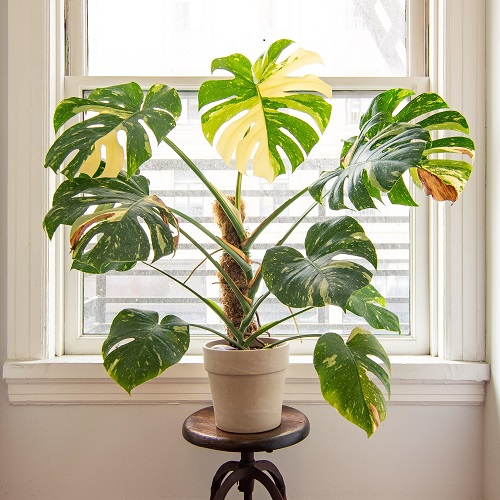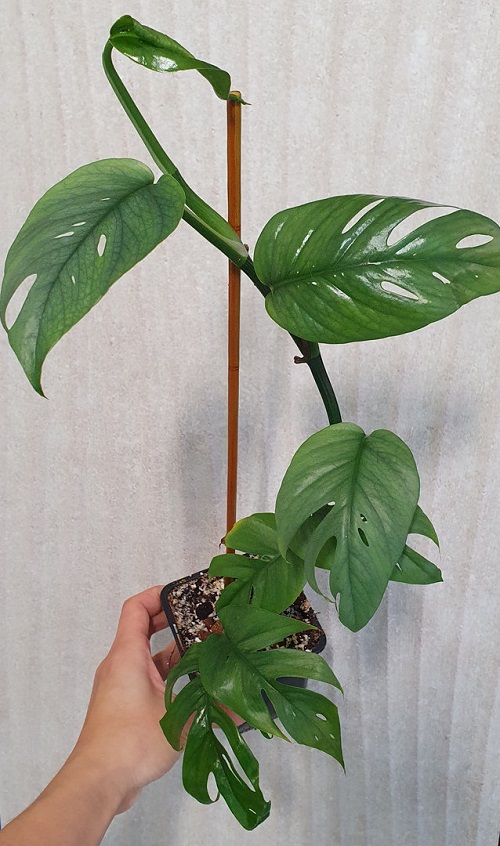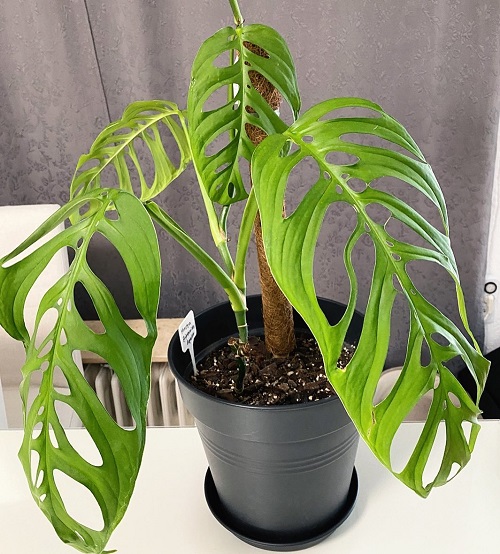Want quirky green specimens to make your indoor garden truly unique? Check out these gorgeous Indoor Plants with Holes in Leaves!
Did you know that some houseplants have holes in their leaves? These holes, also known as perforations or fenestrations, aren’t a sign of pests but are actually the defining features. Read on to learn more about these fascinating indoor plants.
Indoor Plants with Holes in Leaves
1. Monstera obliqua

Botanical Name: Monstera obliqua
This rare monstera variety features thin, delicate leaves with large fenestrations on each side of the midrib. It’s often confused by gardeners with M. adansonii due to similar appearance, but the obliqua has large perforations.
Growing Tip: Expose this plant to a few hours of direct mild morning sun occasionally.
2. Mini Monstera

Botanical Name: Rhaphidophora tetrasperma
Make your indoor garden one-of-a-kind in the neighborhood with this irregularly perforated mini monstera. This tropical plant requires slightly acidic, consistently moist soil and high humidity for best growth indoors.
Growing Tip: Place the plant in bright, indirect sunlight.
3. Monstera Thai Constellation

Botanical Name: Monstera deliciosa ‘Thai Constellation’
The variegation and distinct fenestration make this monstera cultivar a great conversation-starting feature for home and office settings. This houseplant is also admirable for its tall stature (up to 16 feet indoors) and beautiful blooms.
Growing Tip: Create a humid atmosphere around this plant for the best growth indoors.
4. Madagascar Laceleaf

Botanical Name: Aponogeton madagascariensis
With its delicate, lace-like leaves, the Madagascar laceleaf stands out in this list of fenestrated indoor plants. Its leaves can grow up to 15–55 cm long beneath the water’s surface, thus an excellent option for indoor aquariums.
Growing Tip: Provide the plant with low to moderate lighting.
5. Swiss Cheese Plant

Botanical Name: Monstera adansonii
The heart-shaped leaves of this monstera cultivar have holes like Swiss cheese, hence the nickname. They are medium to dark green and can become 18 inches wide but are usually smaller indoors.
Growing Tip: Let the growing medium dry a little between watering sessions.
6. Dragon-Tail Plant

Botanical Name: Epipremnum pinnatum
The dragon-tail plant is a popular tropical vine with dark green perforated leaves and slightly wavy edges. Its leaves are edible and traditionally used as a poultice to treat various disorders.
Growing Tip: Provide sufficient, indirect sunlight.
7. Monstera esqueleto

Botanical Name: Monstera epipremnoides
This rare variety of monstera is highly sought-after because of its deeply fenestrated leaves that almost appear skeleton-like. These glossy green leaves can grow upto 3 feet long on thick, sprawling stems.
Growing Tip: Keep the plant away from sudden temperature fluctuations and cold or heat drafts.







